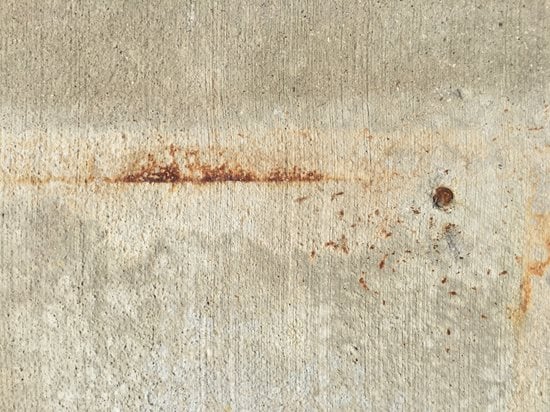
Rust stains are one of the most frustrating eyesores on outdoor surfaces. Whether it’s from a leaky metal pipe, patio furniture, sprinkler overspray, or fertilizer runoff, these reddish-brown blotches can make your concrete, siding, or stone patio look neglected—fast. 😠
The good news? Pressure washing, paired with the right rust remover, can eliminate these stains effectively. But be warned—blasting rust with high pressure alone won’t always work and can even etch certain materials. Here’s how to safely and successfully remove rust stains with a pressure washer. 💦✨
🧲 Why Rust Forms on Outdoor Surfaces
Rust (iron oxide) forms when metal reacts with oxygen and moisture. Common causes outdoors include:
- Metal patio furniture
- Irrigation or sprinkler systems
- Well water with high iron content
- Fertilizers with iron additives
- Metal tools or railings left on concrete
Once rust sets in, it can seep into porous surfaces like concrete, stone, brick, and stucco.
✅ Surfaces You Can Safely Power Wash for Rust
- Concrete driveways and walkways
- Brick pavers and retaining walls
- Vinyl siding and fences
- Stucco and painted surfaces (with caution)
- Stone patios or walls
- Composite decking
⚠️ Avoid using pressure washers on delicate painted surfaces or unsealed wood when removing rust—these may require a softer approach.
🧰 What You’ll Need
- Pressure washer (2,000–3,000 PSI recommended)
- 25° or 40° spray nozzle
- Commercial rust remover or oxalic acid-based cleaner
- Scrub brush (nylon or soft-bristle)
- Garden hose for rinsing
- Protective gloves and goggles
📌 Tip: Wear protective gear—rust removers are often acidic and can irritate skin.
Browse Amazon Here For Popular Pressure Washers And Accessories
🪣 Step-by-Step: How to Remove Rust Stains with Power Washing
1. Identify the Source of the Rust
Fix leaky furniture, corroded metal pipes, or irrigation overspray to prevent future stains.
2. Apply Rust Remover 🧼
Spray or pour the rust remover directly onto the stained area. Let it sit for 5–15 minutes (check label). Don’t let it dry on the surface.
3. Scrub the Area 🧽
Use a soft-bristle brush to agitate the stain and loosen the iron particles.
4. Power Wash the Surface 💦
Use a 25° tip at 2,000–2,500 PSI. Hold the wand 12–18 inches away and spray in even, overlapping lines.
5. Rinse Thoroughly
Remove all chemical residue with a clean water rinse. Repeat the process for deep or older stains.
🧪 Best Rust Removers for Outdoor Use
Look for cleaners containing:
- Oxalic acid (effective and safer than hydrochloric acid)
- Sodium hydrosulfite
- Phosphoric acid (for delicate surfaces)
Popular products include:
- Iron OUT Outdoor Rust Remover
- RustAid
- Krud Kutter Rust Remover
- Simple Green Rust Stain Remover
🚫 Avoid bleach—it won’t remove rust and can worsen stains.
Browse Amazon Here For Popular Rust Removers
⚠️ Common Mistakes to Avoid
❌ Skipping pretreatment—pressure alone won’t remove embedded stains
❌ Letting remover dry before rinsing
❌ Using a zero-degree nozzle—can etch concrete or siding
❌ Forgetting to fix the rust source (e.g., metal base, irrigation valve)
❌ Using the wrong cleaner for the surface type
🧼 Prevention Tips
- Seal concrete and stone to prevent rust penetration
- Use rust-resistant outdoor furniture
- Raise metal pots off patios using rubber feet
- Check sprinkler systems for iron-rich water overspray
- Clean up fertilizer immediately after application
👷 When to Call a Pro
Hire a professional if:
- Rust stains cover a large area
- You’re dealing with historic brick, tile, or stucco
- You’ve tried DIY cleaning without results
- The source of rust is still unknown
Professionals often use acid-neutralizing cleaners and can treat rust without damaging the surface underneath.
🧱 Final Thoughts
Rust stains may be tough, but with the right prep, detergent, and power washing technique, they don’t stand a chance. By pairing pressure washing with a good rust remover and careful technique, you can restore your surfaces to their original clean state—and keep them rust-free for the long haul. 🧲🧼💪



